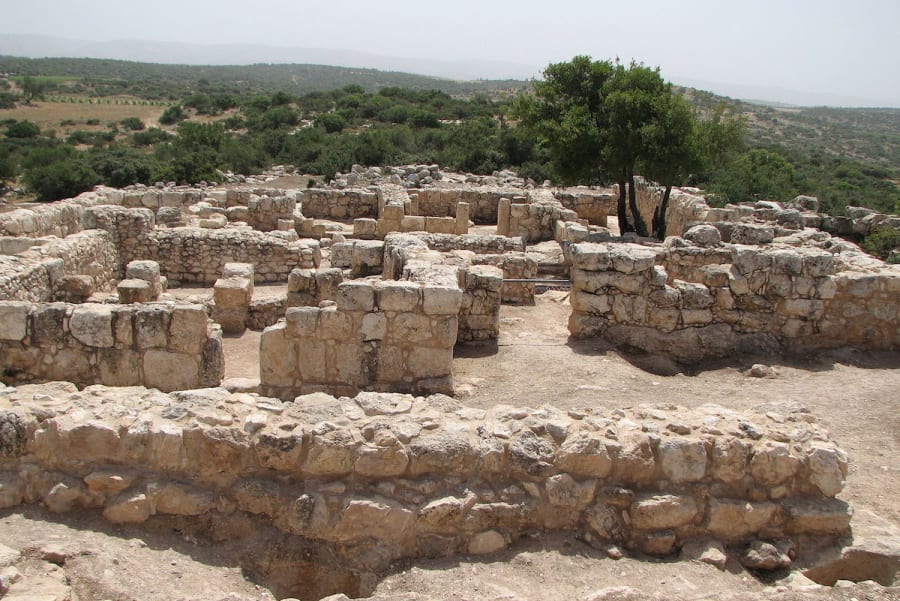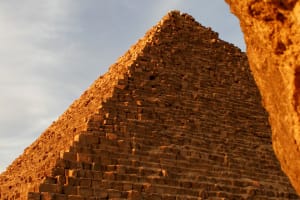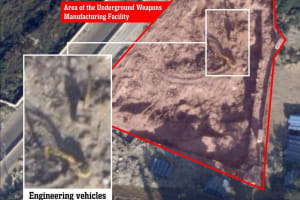Ancient synagogue at Horvat Ethri reveals Jewish village and hidden caves on Judean coastal plain
Historic structure features impressive Second Temple period remnants of Jewish settlement

Israel's National Jewish Fund (KKL-JNF) recently welcomed Israeli guests to visit recently updated sites of two ancient Jewish synagogues, one in Ma'on – located in Israel's southern Negev desert – and the other, Horvat Ethri in Adullam-France Park, located in the Judean coastal plains.
KKL-JNF Chairwoman Ifat Ovadia Luski recently announced, "From north to south, the Land of Israel is filled with pieces of ancient Jewish history. The ancient synagogues tell the Jewish story spanning thousands of years - about vibrant culture, community, and our ancestors who lived here centuries and millennia ago.”
Horvat Ethri, at the top of a hill roughly one-quarter mile (1,332 ft) above sea level, reveals the remains of an ancient Jewish village and hidden caves.
While conducting excavations at the site, the Israel Antiquities Authority (IAA) found the remains of the now partially restored Jewish village from the Second Temple period. They discovered the ancient synagogue, along with wine presses, cisterns, ritual baths and stone ossuaries (boxes for holding the bones of a deceased person), as well as an underground hideout system.
According to historians, the village was violently destroyed during the Bar Kokhba Great Revolt, a Jewish rebellion against Rome, between 132–136 C.E.
During their excavations, archaeologists also uncovered ancient coins, adorned oil lamps with traditional Jewish decorations and several pottery vessels. The Horvat Ethri ruins are located in Adullam-France Park in the heart of the Judean coastal plain. The synagogue can be found just past the location of natural springs called Ein Keshetot, about 30 minutes from the eastern side of the Sea of Galilee in northern Israel.
Adullam-France Park is an open space that combines nature and agriculture with historical sites. KKL-JNF has built hiking and cycling trails and initiated archaeological excavations in cooperation with the Antiquities Authority. The park itself was created with the assistance of its friends in France.
Because of the secluded nature at the site, most of the stones used to build the synagogue remained as a pile of large ruins. As early as the late 19th century, the stone pile was identified as the remains of an ancient synagogue. One excavation was recorded to have taken place in 1905 and the most recent, in 2003, when the synagogue restoration project first began
The synagogue is surrounded by a 'mourning fence,' but can be appreciated from the outside, despite the lack of access. The front of the synagogue and its entrance are almost completely preserved, as are significant portions of some walls and the two columns of the central hall that stand on bases. One highlight is the Holy Ark, which stands five meters tall.
The entrance is an arch supported by two decorated pilasters. Each side of the rectangular columns is adorned with geometric decorations and an eagle. A set of steps made of stone leads up to the stage, which is decorated with reliefs, including images of the traditional Jewish menorah or candelabra. Other decorations depicting Jewish symbols, such as a pitcher, shofar, and the four species can also be seen.
The KKL-JNF park authority advises guests to bring a flashlight when visiting the stalactite cave and the underground system.
KKL-JNF also welcomes guests to visit the Ancient Ma'on synagogue in the Negev. The historic synagogue testifies to the existence of a Jewish community in what was the mostly Christian-inhabited town of Ma'on during the late Roman period, roughly during the 5th and 7th centuries C.E. The synagogue features a magnificent mosaic floor, preserved on a newly-installed foundation.
The Keren Kayemeth LeIsrael-Jewish National Fund is a non-profit organization founded in 1901 to develop land in Israel and preserve the country's natural and cultural heritage.

The All Israel News Staff is a team of journalists in Israel.














